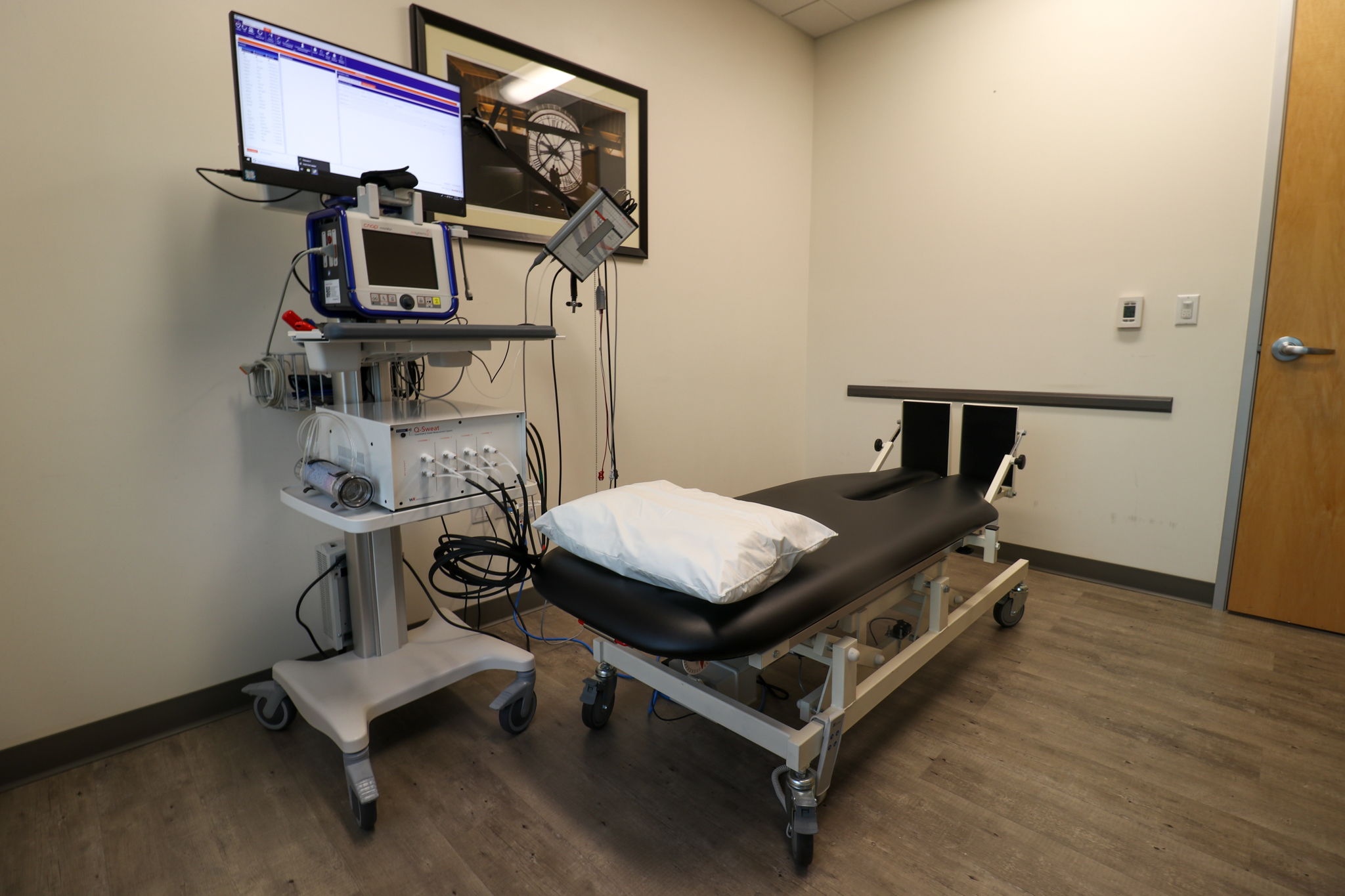
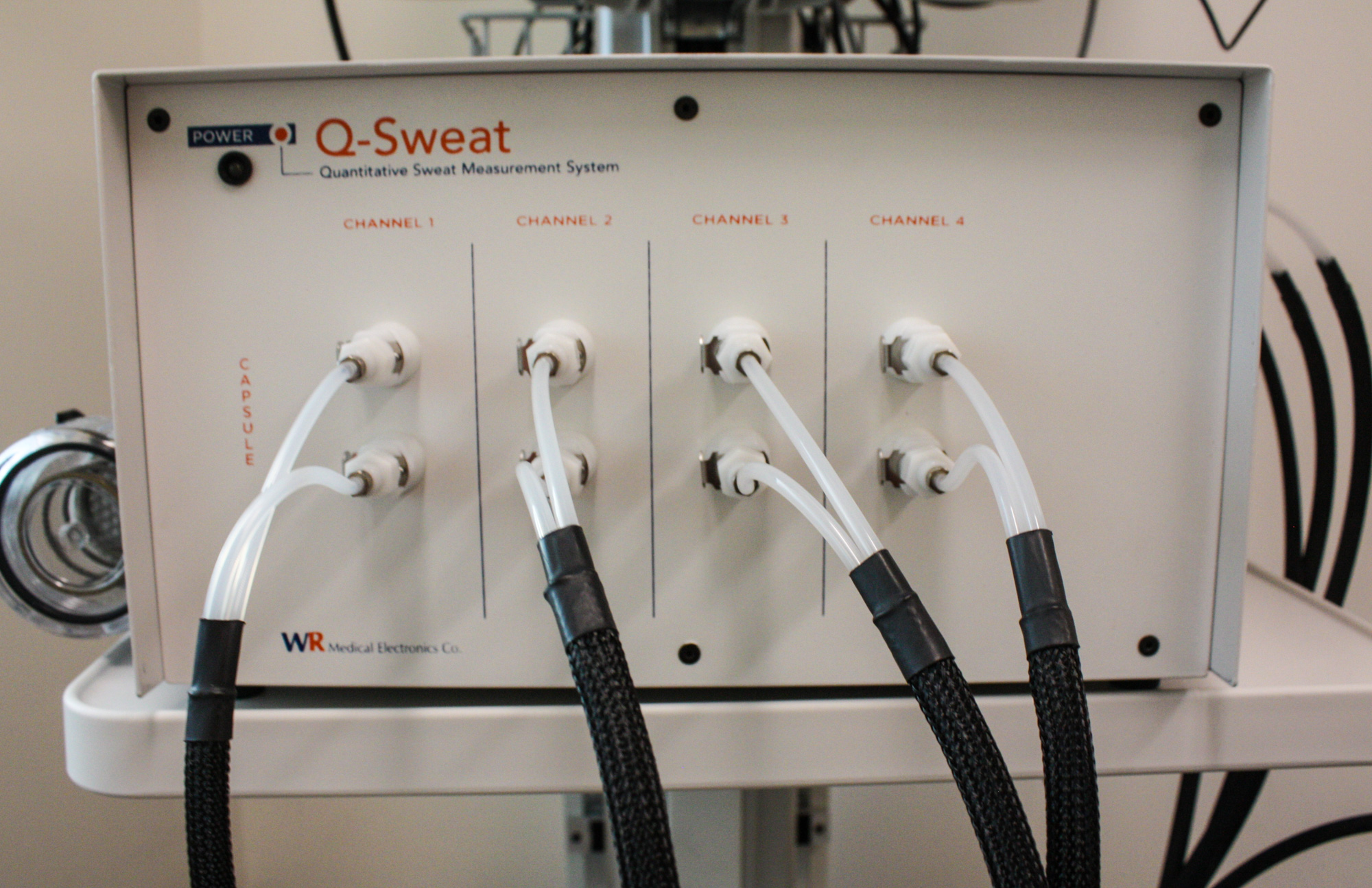
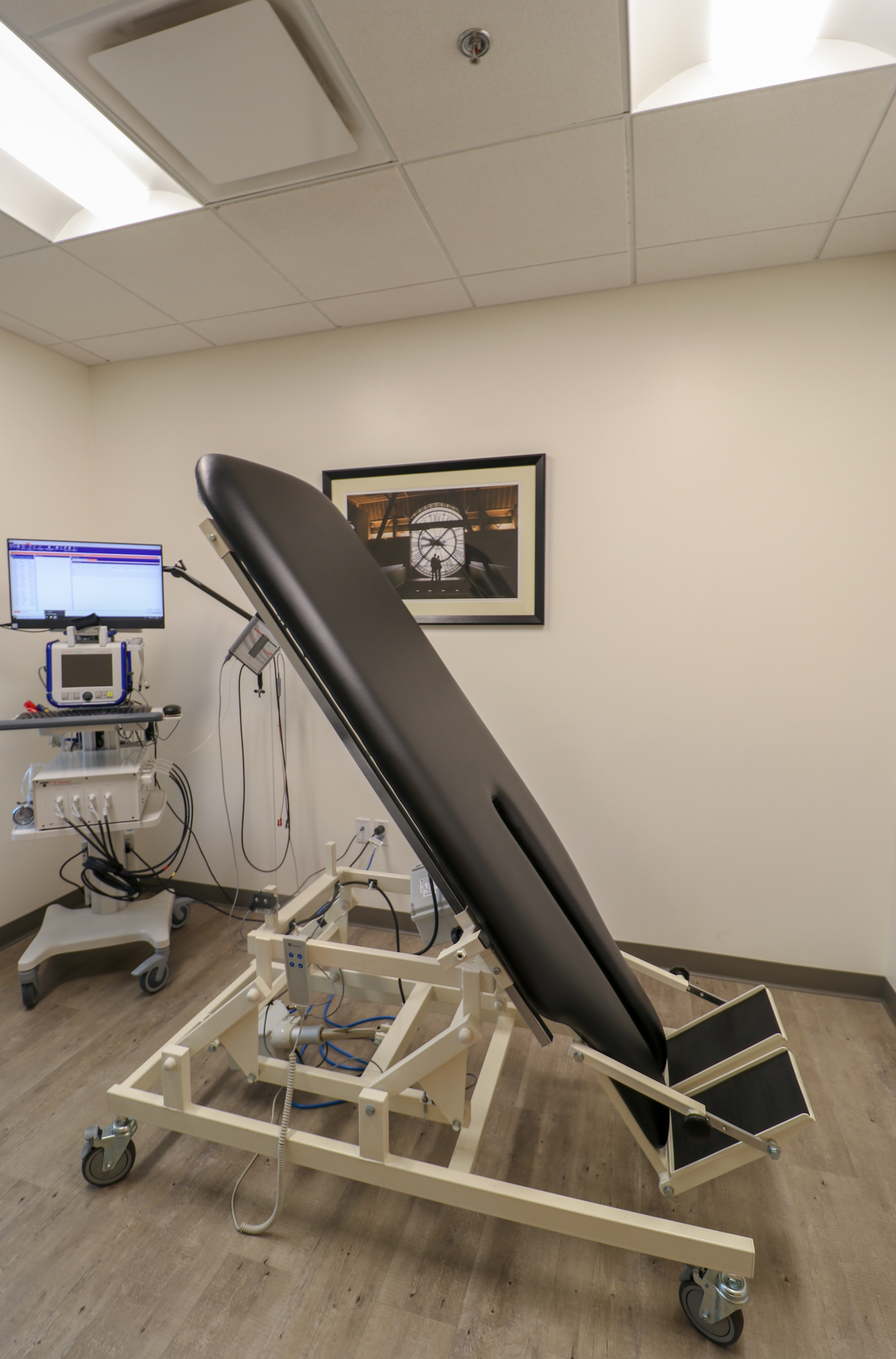
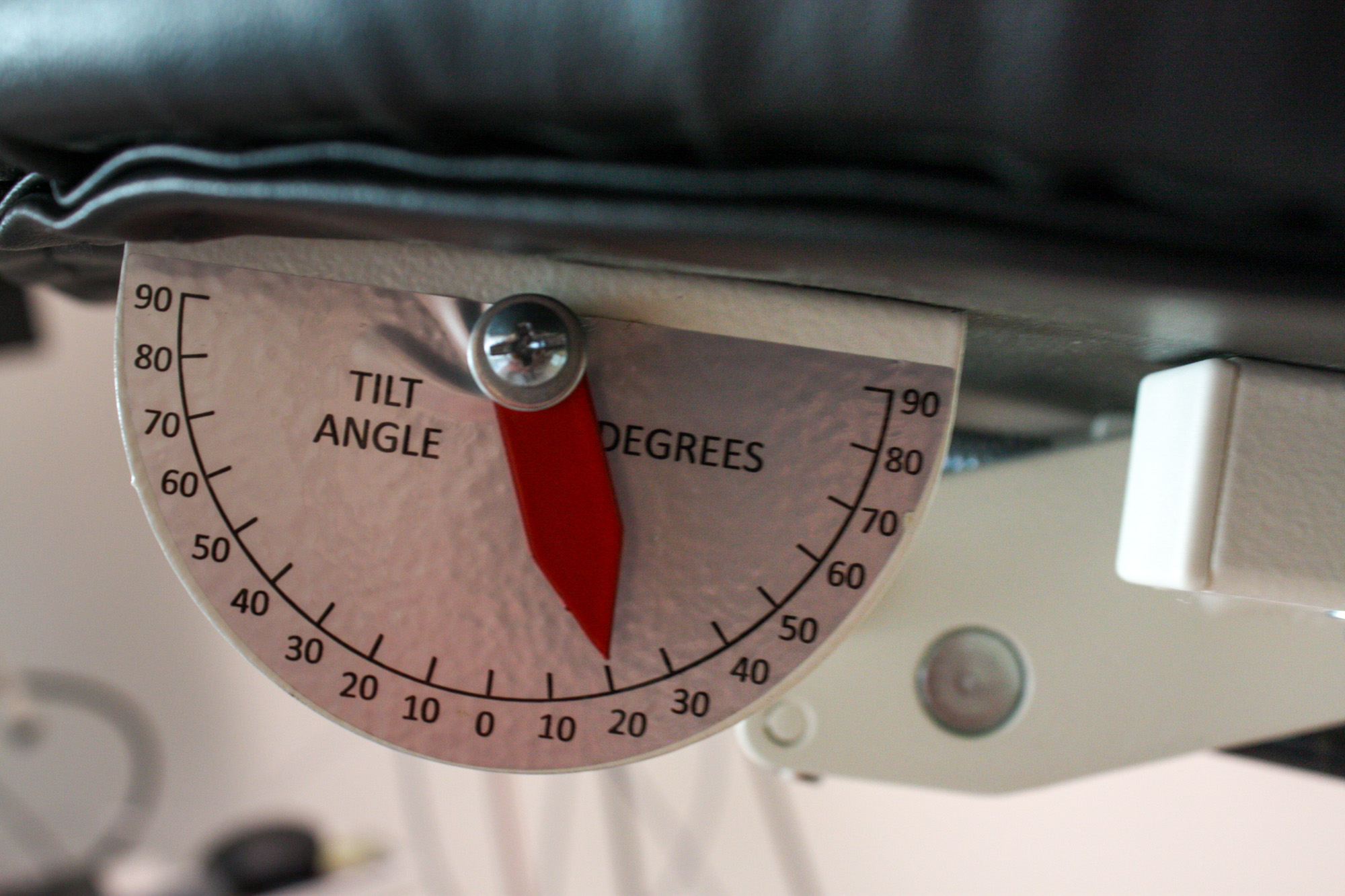
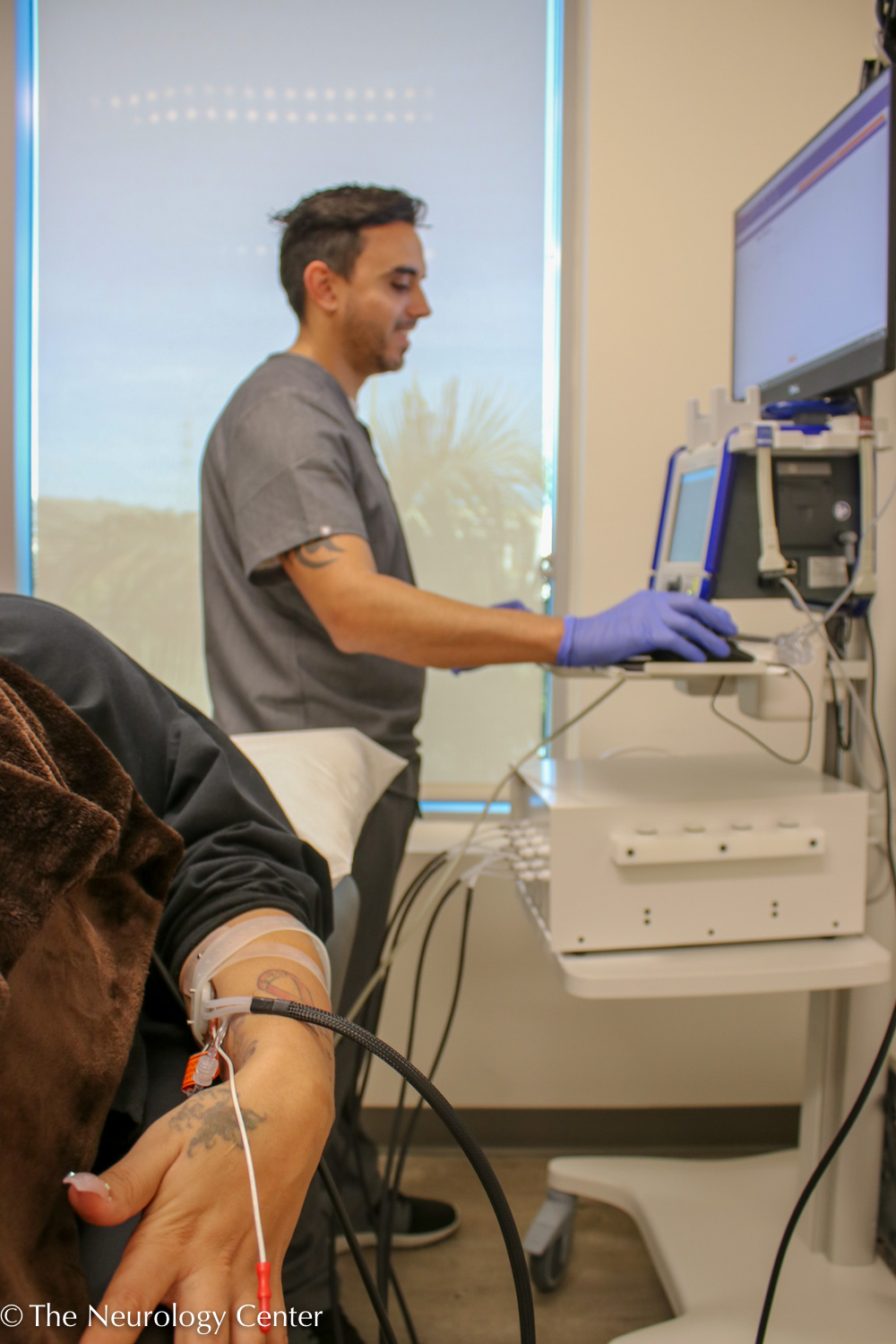
Autonomic Testing
Autonomic instructions: Please click here to review test preparation instructions
Autonomic Medications: Please click here to review medication restrictions
What to expect: Please click here to review what to expect for your test
Indications: Autonomic testing, also known as autonomic reflex screen or autonomic response testing, is a non-invasive test that measures how the nervous system works to control blood pressure, heart rate and sweating. Your doctor or neurologist may recommend autonomic testing if you’re experiencing symptoms including:
- Abnormal sweating
- Dizziness
- Fainting
- Fatigue
- Fluctuating blood pressure
- Numbness and burning in your hands or feet
- Rapid heart rate
- Shortness of breath
Your doctor may order this test for other reasons as well.
What to expect during autonomic testing:
Autonomic testing consists of activities designed to stimulate the autonomic nervous system to produce changes in blood pressure, heart rate, breathing and sweating in a controlled setting. The test includes two main parts – a quantitative sudomotor axon reflex test and a cardiovascular autonomic test.
- Quantitative sudomotor axon reflex test (QSART): QSART is a test that measures the nerves that control sweating. During this first part of the autonomic test, we apply a mild electrical current to your skin to activate the nerves that supply the sweat glands. You may experience mild burning or tingling sensations in the areas being stimulated.
- Cardiovascular autonomic test with head-up tilt: During this second part of the autonomic test, we record your blood pressure and heart rate using an electrocardiogram (ECG). This test involves performing the simple maneuvers such as taking deep breaths , blowing into a mouth piece and changing position from lying down to standing upright.
Preparation: (VERY IMPORTANT)- Autonomic testing takes 1.5 to 2 hours.
Please arrive 30 minutes early; if you are late or not properly prepared for testing, it may be necessary to reschedule your test. In the event you are unable to keep your appointment, please call us at (760) 631-3000 to cancel your appointment. We ask that you cancel at least 24 hours in advance.
- Wear comfortable, loose-fitting clothing (loose pants/sweats or shorts and a loose t-shirt). During the testing, one pant leg will need to be raised above the knee. You will be asked to remove your shoes and socks.
- No oils or lotions on your skin the day of test.
- Shave your legs- this applies to all patients who are being tested for QSART (sweat test) only.
- No medications that may interfere with the test. Review list of medications that may need to be stopped before the test because they may affect the results.
- No nicotine (cigarettes) for twenty-four (24) hours before the test.
- No caffeine (coffee, cola, energy drinks, tea, etc.) for twenty-four (24) hours before the test.
- No alcohol or medical marijuana for twenty-four (24) hours before the test.
- Eat and drink normally for 24 hours prior to testing and make sure you are well hydrated the day before your test. Please note you will not be able to use the restroom during testing.
Risks of autonomic testing
Autonomic testing is considered safe. Some people may faint or collapse during the head-up tilt. When a patient’s symptoms and continuous recording of heart rate and blood pressure suggest pre-syncope (near fainting), the patient will be tilted back to a flat position immediately.
After the test: When your test is complete, you can return to your normal activities. Fatigue and lightheadedness may occur, if that pertains to you, you may consider to arrange for a friend or family member to pick you up after testing.